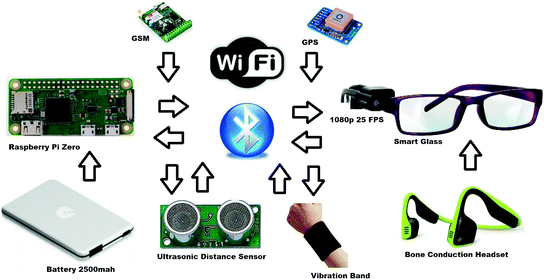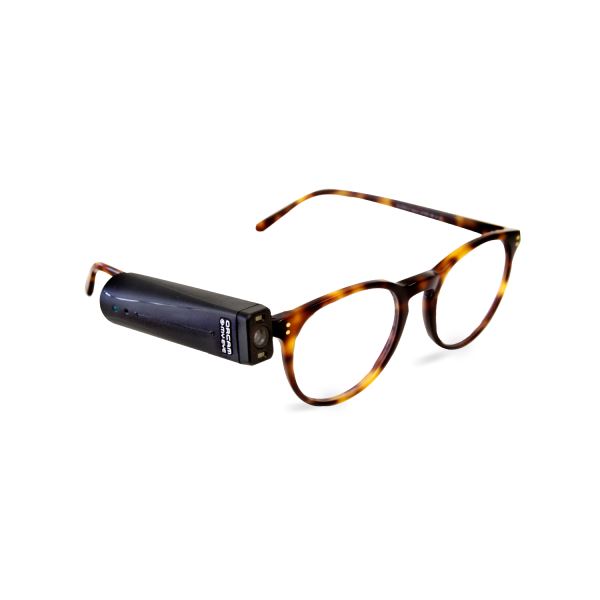OCR Devices for the Blind: Breaking Barriers with Optical Character Recognition
Discover Advanced Assistive Gadgets for Individuals With Aesthetic Impairments
The landscape of assistive technology for individuals with visual disabilities is developing quickly, presenting a variety of ingenious devices that improve freedom and engagement (Braille displays and notetakers). From wise glasses that effortlessly merge visual input with acoustic guidance to sophisticated navigation applications that redefine spatial understanding, these tools are improving possibilities. The newest advancements in Braille technology and voice-activated systems dramatically add to availability. Nevertheless, the effects of these developments extend much beyond simple performance; they test conventional perceptions of handicap and independence. What might this suggest for the future of addition and assistance?
Smart Glasses Innovations
Smart glasses stand for a significant innovation in assistive modern technology for individuals with aesthetic impairments. These ingenious gadgets incorporate different attributes designed to enhance the user's interaction with their setting. Geared up with sensing units and electronic cameras, smart glasses can capture real-time visual details, which is after that processed and communicated to the customer via sound responses or haptic sensations. This performance allows people to receive instant descriptions of their surroundings, enhancing their ability to navigate and engage with the world.
Additionally, developments in man-made intelligence have actually further boosted the capacities of wise glasses. Artificial intelligence formulas can acknowledge faces, reviewed message, and determine things, making them indispensable tools for everyday jobs. Individuals can get acoustic signs that supply context regarding their environment, promoting self-reliance and confidence.
In addition, the ergonomic layout and light-weight nature of several wise glasses make them ideal for prolonged usage, making certain convenience while enhancing performance. As these devices continue to progress, they hold the prospective to transform the method people with aesthetic disabilities experience their lives, connecting the space between accessibility and modern technology. The ongoing r & d in this area promise to expand the possibilities for wise glasses, making them an important part of modern-day assistive tools.
Navigation Application and Devices
Countless navigating applications and tools have become essential resources for people with aesthetic impairments, significantly enhancing their ability to traverse strange environments. These modern technologies utilize general practitioner performance, audio hints, and real-time data to offer users with precise navigating support.
One prominent example is the Aira application, which links individuals to trained agents that can give visual descriptions of environments and navigating guidance with an online video clip feed. This solution enhances the user's spatial understanding and confidence while browsing. An additional notable tool is Seeing Eye GPS, which supplies voice-guided navigating and sights, enabling customers to gain access to crucial details regarding their surroundings.

As modern technology remains to development, the development of much more innovative navigation tools guarantees to more empower individuals with aesthetic problems, helping with seamless movement and integration right into diverse atmospheres. Such technologies contribute in promoting a more inclusive culture.
Braille Modern Technology Advancements
Recently, innovations in Braille learn this here now innovation have dramatically transformed how people with visual problems gain access to details and engage with the globe around them. The advancement of mobile Braille screens has actually reinvented reading by enabling customers to attach wirelessly to computers, smart devices, and tablets. These tools convert text right into Braille in real-time, enabling seamless interaction with electronic web content.
Furthermore, ingenious Braille printers have actually emerged, boosting the production of responsive products. Modern embossers are faster and extra reliable, allowing for the fast production of Braille documents and academic materials. This performance reduces the time and price connected with producing Braille sources, making them much more accessible to companies and colleges.
In addition, the integration of Braille with other innovations, such as fabricated intelligence and artificial intelligence, has actually opened new methods for customized discovering experiences. Voice recognition and synthesis technologies can enhance Braille, providing an inclusive technique to info circulation.
As the demand for inclusive education and workplace environments grows, these technical developments play an important function in equipping individuals with aesthetic problems, guaranteeing they have equal access to information and possibilities in numerous elements of life.
Wearable Tools for Self-reliance
A growing array of wearable tools is improving self-reliance for individuals with visual disabilities, using ingenious solutions that boost navigation and daily living. Braille displays and notetakers. These tools use sophisticated technologies to provide real-time responses and assistance, promoting freedom in different environments

Wearable technology additionally includes smartwatches that can be configured with ease of access functions, allowing individuals to receive notices, track their places, and even call for support with the touch of a switch. In addition, some devices integrate fabricated knowledge to analyze the atmosphere, offering audio summaries of neighboring things or people.
Voice-Activated Assistive Solutions
Leveraging voice-activated assistive options has actually transformed the landscape of assistance for people with aesthetic disabilities, providing hands-free communication and access to a selection of tasks. These modern technologies use all-natural language processing and man-made eyeglass exam knowledge to enable individuals to do everyday tasks through straightforward voice commands.

Additionally, current advancements in voice recognition precision have actually enhanced the customer experience considerably, suiting varied accents and speech patterns. This inclusivity ensures that even more individuals can take advantage of these innovations, promoting a higher sense of autonomy.
Verdict
Finally, the development of innovative assistive devices considerably improves the independence and top quality of i loved this life for individuals with aesthetic impairments. Innovations such as wise glasses, navigation applications, Braille technology, wearable tools, and voice-activated services jointly foster an even more inclusive atmosphere. These technologies equip users to navigate their environments with confidence and involve even more completely with the globe, eventually advertising greater access and level playing fields for individuals dealing with aesthetic obstacles.
The landscape of assistive innovation for people with aesthetic impairments is progressing swiftly, presenting a variety of cutting-edge tools that enhance autonomy and interaction.Smart glasses stand for a significant advancement in assistive innovation for people with aesthetic disabilities. As these tools continue to develop, they hold the possible to change the way individuals with visual disabilities experience their everyday lives, connecting the void in between access and technology.In recent years, improvements in Braille modern technology have actually dramatically changed how individuals with aesthetic problems accessibility details and involve with the globe around them. These innovations equip individuals to browse their surroundings with confidence and engage more fully with the world, ultimately promoting greater ease of access and equal chances for individuals facing aesthetic obstacles.